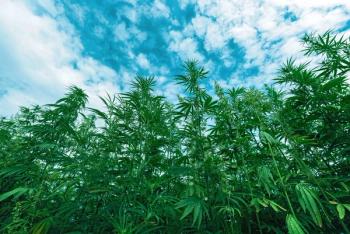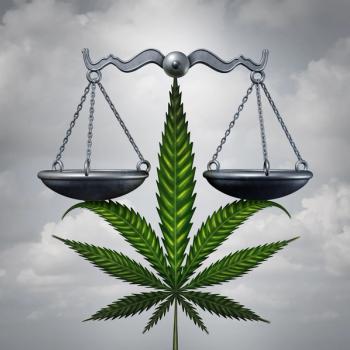
Cannabis Science and Technology
- January/February 2021
- Volume 4
- Issue 1
The FDA is Coming…Will the Cannabis Industry Be Ready? Part III: Process Control for Extractors

A discussion on how extractors need to monitor the chemical processes they perform.
In this the third installment of what to expect when US Food and Drug Administration (FDA) regulation comes to our industry, we will discuss how extractors need to monitor the chemical processes they perform. Process control will mean monitoring your manufacturing processes constantly and in real time via in-house testing (as discussed in the last column), recording that data, and plotting it and analyzing it to understand your process and how to make it reproducible.
Cannabis Is Medicine…Test it Like Medicine…This Means You, Extractors!
In the highly regulated universe of the pharmaceutical industry, the cradle-to grave testing paradigm is enforced (1). For cannabis extractors this means not only testing your final product for label claims as currently required by state law, but testing during and after each and every manufacturing step.
Last time, I pointed out that cannabis extractors might not want to admit it, but you are chemical manufacturers (2). I also pointed out that from a practical point of view, cannabinoid testing should be the first analyzer you buy for your in-house laboratory. I also stated that you should test after each manufacturing step. When performing an extraction, the extract should be tested during the process to optimize the process and make sure what you make is reproducible. After winterization your extract should be tested to make sure cannabinoids have not been lost, which has been known to happen. If you are losing potency during the winterization step, use the data from your analyses to experiment with and optimize the process. The decarboxylation reaction should be monitored for completeness, and distillations should be monitored, ideally at multiple times during the process, to insure quality and reproducibility. The data gathered can also be used to optimize the distillation to obtain the purest material possible. Methods exist for quickly and conveniently analyzing distillates (3).
How to Test: At-Line Versus In-Line Testing
At-Line Testing
At-line analysis is performed using an analyzer physically located near the chemical process being monitored. In other words, we bring the sample to the analyzer. A “grab sample” is obtained from the process. In the case of an extraction or distillation apparatus, you would need to have a sampling line installed with a valve that can be opened to “grab” a sample. Similarly, for decarboxylation reactions the ability to grab samples during the process is required. Figure 1 shows an at-line analysis setup.
A portion of a distillation apparatus is seen at right. A mid-infrared (IR) cannabis analyzer is seen at left (3), in the middle is the computer that controls and scans the analyzer. The entire setup is on one of the stainless steel tables that seem ubiquitous in extraction facilities. In this case, a sampling valve was used to grab a sample, some of it was placed on the sampling window of the mid-IR analyzer, and 1 min later results were obtained (3).
At-line testing has the advantages that little alteration to the chemical machinery, other than perhaps a sampling line, needs to be made. However, at-line testing requires a human being present to collect and analyze the sample, driving up costs. At-line testing also does not give a real time picture of a process as it may take several minutes to collect, prepare, and analyze a sample.
In-Line Testing
In-line sampling involves putting an analyzer directly into the chemical process. In other words, we bring the analyzer to the sample. For example, at petroleum refineries the octane number of gasoline is measured in the pipe using IR spectroscopy (4). In-line analysis is widely used in the pharmaceutical and other industries (5–7). In theory an in-line cannabinoid analyzer could be installed on extraction and distillation apparatuses to analyze extracts and distillates. I have seen a lot of interest amongst apparatus manufacturers and extractors for obtaining in-line analysis, but to date have heard of few actual installations. If anyone knows of any peer-reviewed papers on in-line cannabinoid analysis please contact me using the info in my bio at the end of this column.
In a previous column, I discussed the advantages and disadvantages of chromatography versus mid-IR spectroscopy for potency analysis (8). Using chromatography for in-line analysis is challenging since it inevitably involves manual sample preparation, which is difficult to automate in the middle of a chemical process. Also, chromatographic runs take many minutes, and such delays can make the process data obtained useless. This is why, in general, IR spectroscopy is used instead of chromatography for in-line analysis across many industries (4–7).
An advantage of in-line testing is that in can provide results in near real time because there is no need to wait for a sample to be collected, prepared, and analyzed. This is very useful for a process that needs tight control, or for catching emergency situations before they get out of hand. Also, there is no need for anyone to be present to collect and analyze samples, driving down ongoing costs.
However, in-line analyzers must be installed in the process, which involves re-engineering your apparatus. The inline analyzer must also be tested in place and calibrated. Needless to say, all of this up front work takes time and money. I have seen the total cost of obtaining in-line analysis, between the analyzer, installation, and calibration go over $100k.
Properly Analyzing Process Data
The idea here is to monitor a given process in real time, for example measuring the tetrahydrocannabinol (THC) in an extract every 5 min, and then plotting this data. Additionally, plots of the results of different batches should also be plotted versus time to examine the long term trends of your process. Such a diagram is seen in Figure 2. It is a plot of the weight percent THC in marijuana distillate versus batch number. This contains 134 data points which represents many months of data.
When monitoring a process the THC value, or any other process variable, is going to change over time. The job of the process engineer is to look at historical data and determine what measured values are allowed meaning the process is in control, and what values are not allowed meaning the process is out of control. We define the upper control limit as the highest allowed value of the process variable, whereas the lower control limit is determined by the lowest allowed value. The red lines in Figure 2 represent the upper and lower control limits for this distillation process. The dashed green line represents the average THC value of 88.7%.
The control limits are often times defined as some multiple of the standard deviation for the data (9). In Figure 2 the control limits were set as ±1 standard deviation, or ±3.6% THC.
Figure 2 shows that 25 batches were above the upper control limit, and 22 were below the control limit for a total of 57 or fully 43% of the batches out of specification. There are several possible conclusions from this:
- Based on the upper and lower control limits as defined, the process is out of control and needs to be fixed.
- The upper and lower control limits are too tight, and the limits need to be redefined. For example, for the data in Figure 2 if the upper and lower control limits are set at ±2 standard deviations (±7.2%) the number of out of specification batches falls to eight or 6%.
Another useful plot for process control is to look at the average of a process variable over time. This smooths out daily variations and gives the big picture of the process. Figure 3 shows just a plot, the average distillate Wt. % THC versus time using the data from Figure 2.
The x-axis is in “bin numbers.” Bin one is the average of batches 1–20, bin 2 is the average of batches 21–40, and so on. The bin number is in time units because batch numbers were assigned consecutively, with batch 1 being the furthest back in time, and batch 134 being the most recent. Note the almost bell shape curve in Figure 3, showing that total THC rose at first, leveled off, and then fell again. Assuming the plateau area is desired, it would be the job of the process engineer to determine how to tweak the process to achieve the desired total THC values.
Following the Decarboxylation Reaction
Decarboxylation of a winterized extract is a chemical process, and should be followed in real time. In many extraction laboratories extracts are decarboxylated by placing them in metal pans and heating them on a hot plate. The extract will bubble as CO2 molecules escape, and a rule of thumb is that the decarboxylation process is done when the extract stops boiling. When I was a laboratory director at a cannabis extractor, I did the simple experiment of taking several batches of “non-bubbly” extract and analyzing them. None of them had completely decarboxylated, and all of them had some level of THCA, which varied across the batches. This indicates that the “no bubbles” criterion is not sufficient to establish when the reaction has gone to completion, that is when the THCA concentration goes to zero.
Since decarboxylation is a manufacturing step, authorities such as the FDA will expect you to monitor it in real time. This makes economic sense because if you know exactly when all the THCA has reacted, you can stop the reaction saving time, energy, and money. To determine when a decarboxylation reaction is over, a plot of acid cannabinoid concentration versus time can be made as seen in Figure 4, which is a plot of THCA Wt. % versus time.
Of course, since THCA is being consumed in this reaction the THCA concentration goes down over time. Based on this plot the reaction will go to completion in about 9.6 h. Mid-IR spectroscopy has been used to monitor decarboxylation reactions over time (10).
Conclusions
Since extractors make medicine they will inevitably need to institute process control programs. We discussed where in your manufacturing process you should test, considered at-line and in-line analyses, and gave some examples of the types of process data to obtain and how to interpret it.
About the Columnist
Brian C. Smith, PHD, is Founder, CEO, and Chief Technical Officer of Big Sur Scientific. He is the inventor of the BSS series of patented mid-infrared based cannabis analyzers. Dr. Smith has done pioneering research and published numerous peer-reviewed papers on the application of mid-infrared spectroscopy to cannabis analysis, and sits on the editorial board of Cannabis Science and Technology. He has worked as a laboratory director for a cannabis extractor, as an analytical chemist for Waters Associates and PerkinElmer, and as an analytical instrument salesperson. He has more than 30 years of experience in chemical analysis and has written three books on the subject. Dr. Smith earned his PhD on physical chemistry from Dartmouth College. Direct correspondence to:
References
- B.C. Smith, Cannabis Science and Technology 2(4), 12–14 (2019).
- B.C. Smith, Cannabis Science and Technology 3(9), 8-11 (2020).
- B.C. Smith, P. Lessard, and R. Pearson, Cannabis Science and Technology, 2(1), 48 (2019).
- P. Finch, Measurement + Control 27, 115 (1994).
- E.Ciurczak and J.K. Drennen III, Pharmaceutical and Medical Applications of Near-Infrared Spectroscopy, (Taylor and Francis, Boca Raton, Florida, 2014).
- Handbook of Near-Infrared Analysis, D. Burns and E. Ciurczak, Eds, (Marcel Dekker, New York, New York, 1992).
- J. Workman and L. Weyer, Practical Guide to Interpretive Near-Infrared Spectroscopy, (CRC Press, Boca Raton, Florida, 2008).
- B.C. Smith, Cannabis Science and Technology 2(6), 10-14 (2019).
- B.C. Smith, Cannabis Science and Technology 2(1), 14-19 (2019).
- B.C. Smith, Cannabis Science and Technology, manuscript in preparation.
How to Cite this Article
B. Smith, Cannabis Science and Technology 4(1), 12-15 (2021).
Articles in this issue
almost 5 years ago
Turning the Page to a New Yearalmost 5 years ago
Cannabis Water Report Highlights Opportunities for Water Efficiencyalmost 5 years ago
Connecting Cannabis with the Evolving Needs of the Consumeralmost 5 years ago
Lighting: Setting the Stage for Genetic Potential in Cannabis and Hempabout 5 years ago
A Market Overview: CBD TopicalsNewsletter
Unlock the latest breakthroughs in cannabis science—subscribe now to get expert insights, research, and industry updates delivered to your inbox.





